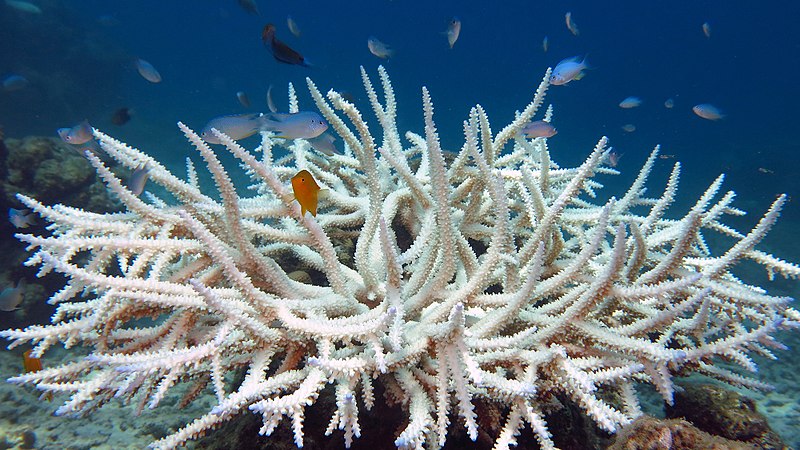The Great Barrier Reef, a dazzling underwater world teeming with life, is ablaze – not with literal fire, but with a phenomenon just as devastating: coral bleaching. This worrying situation in Australia shines a light on a bigger problem: coral reefs worldwide are in trouble due to warming oceans.
Bleaching: A Sign of Distress
Coral reefs are not just stunning underwater landscapes; they are vibrant ecosystems teeming with life. When stressed by factors like rising water temperatures, corals expel the colorful algae living within them. This process, known as bleaching, leaves corals ghostly white and vulnerable to disease and death.
The Great Barrier Reef has just endured its worst summer on record, with widespread bleaching events scorching vast stretches. This isn’t an isolated incident. A mass coral bleaching event is currently impacting at least 53 countries, painting a grim picture for these vital marine ecosystems.
Scientists are concerned that without proper intervention to mitigate warming, global temperatures could surge by more than 35 degrees Fahrenheit (2 degrees Celsius) by 2025. They warn that such an increase could result in the loss of an alarming 99% of coral reefs.
Beyond the Reef: A Delicate Balance
Coral reefs are more than just breathtaking underwater landscapes. They teem with life, providing vital habitat for a quarter of all marine species. They also function as natural breakwaters, protecting coastlines from erosion and storm surges. The loss of healthy coral reefs disrupts this delicate balance, impacting not just marine life but also coastal communities that rely on them for food security and tourism.
A Glimmer of Hope:
The situation for coral reefs is undoubtedly dire. However, scientists, conservationists, and policymakers are taking actions. Efforts include establishing Marine Protected Areas, developing Coral Restoration Techniques, and combating Climate Change to protect these vital ecosystems.







